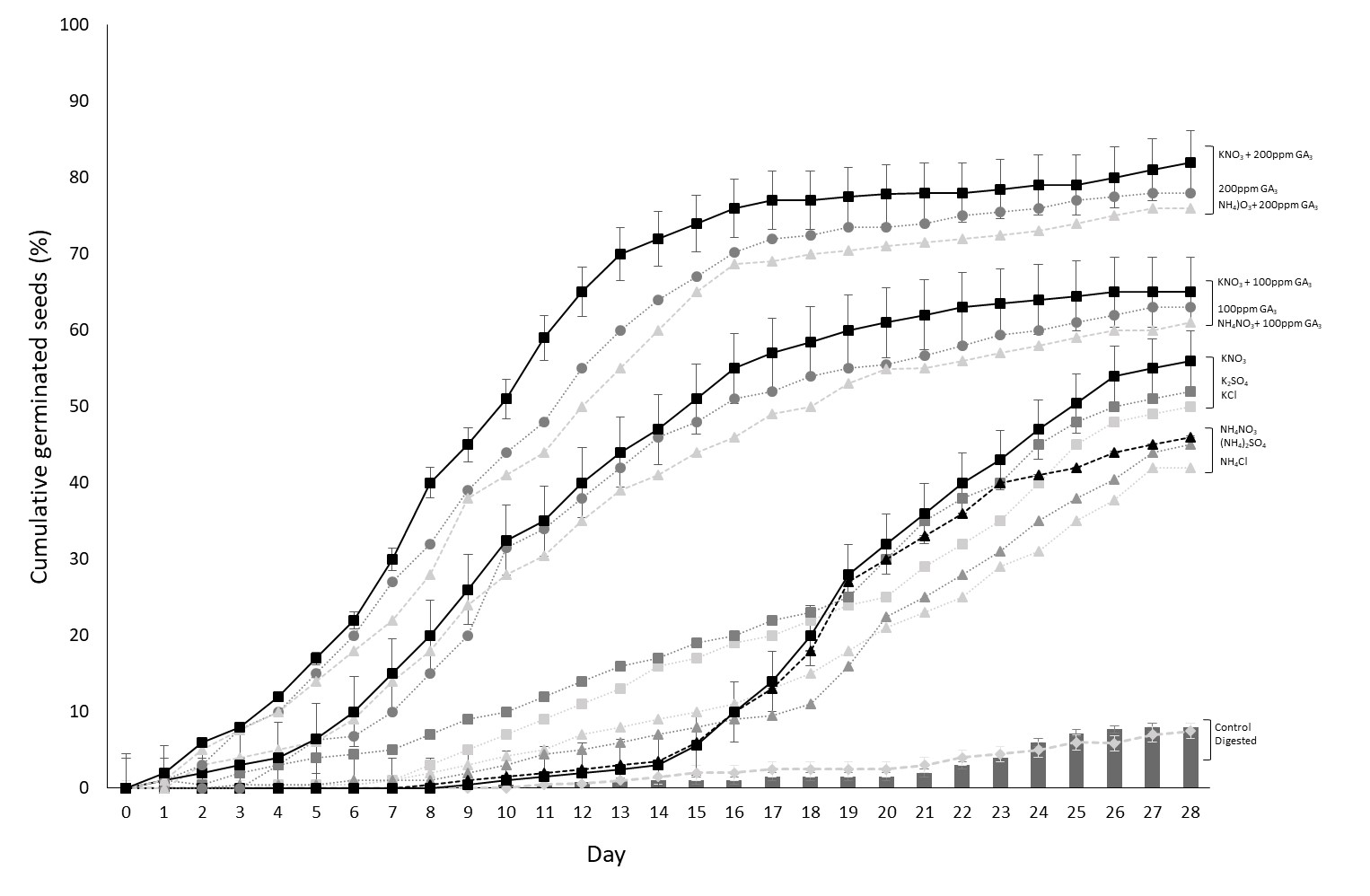The effects of different priming techniques were evaluated to improve the dormancy and germination of wild seeds of “Piquín” chili pepper. Three experiments were designed for pre-sowing treatment of seeds: a) chemical seeds digestion; b) halopriming (with K+ or NH4+ of NO3-, SO42- or Cl-) at different priming times (24, 48 or 72 h) and osmotic potential (-5, -10 or -15 atm) and c) previously selected halopriming (KNO3 and NH4NO3) + Gibberellic acid (GA3, at 100 or 200 ppm) were tested. Digestion treatments did show a negative effect on seed germination. Recommended values of osmotic potential (Ψs), to improve Piquín chili seed germination, must be between -10 and -15 atm (-1.0 and -1.5 MPa) and the priming time must be between 48 and 72 hours. Priming techniques can considerably reduce Capsaicinoids content on seeds, improve dormancy, seed germination performance, and increase the rate and uniformity of seedling establishment. KNO3 and secondly GA3 treatments may improve rapid and uniform germination and seedling emergence. The results provide basic information to develop guidelines for commercial establishment of Piquín pepper crops.

